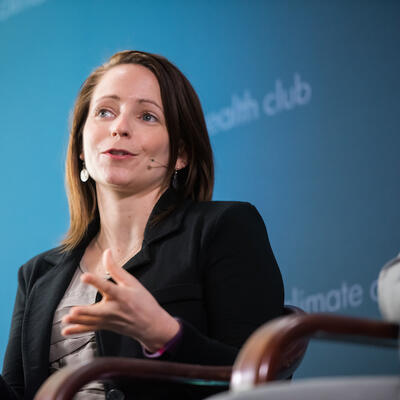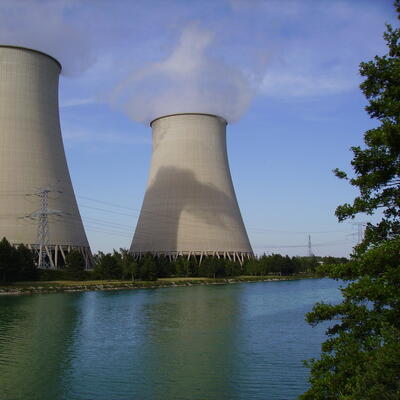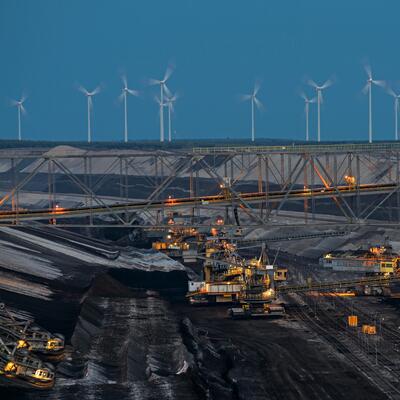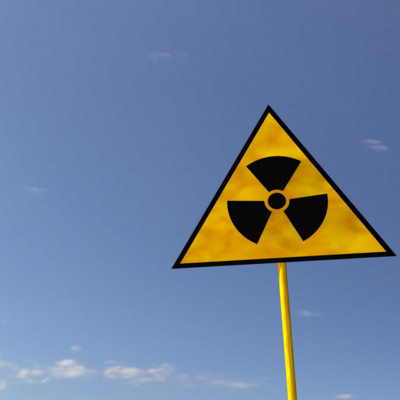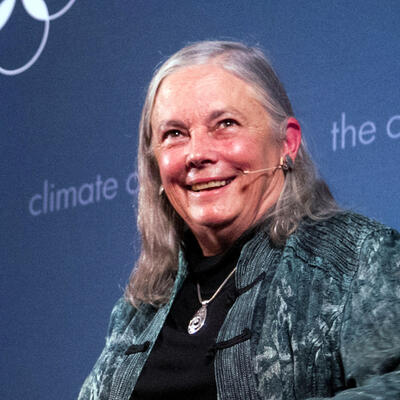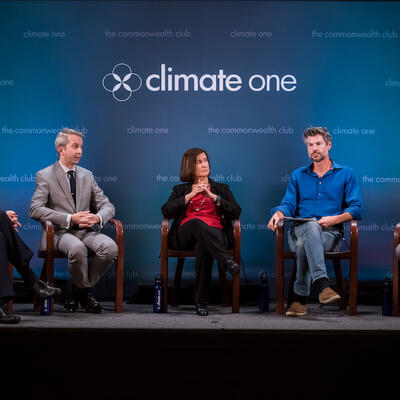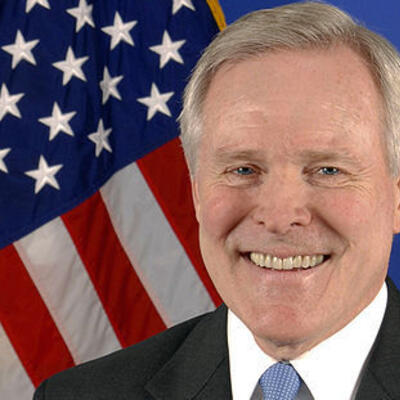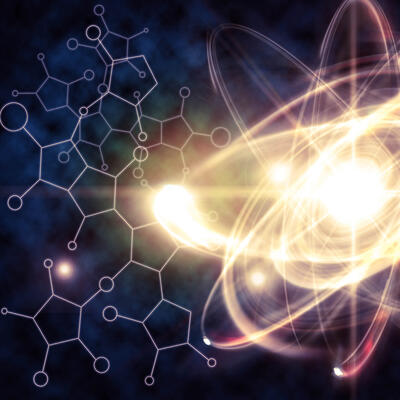
What’s the Future of Nuclear Power?
Guests
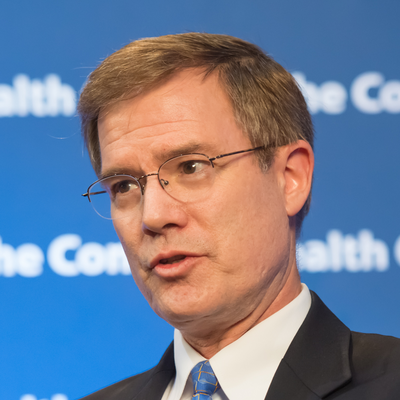
Per Peterson
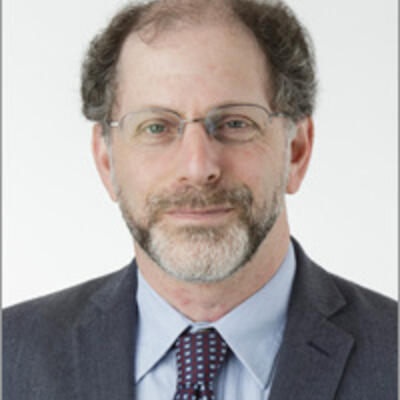
Edwin Lyman
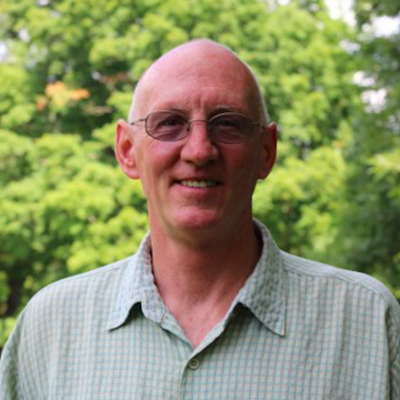
Ken Farabaugh
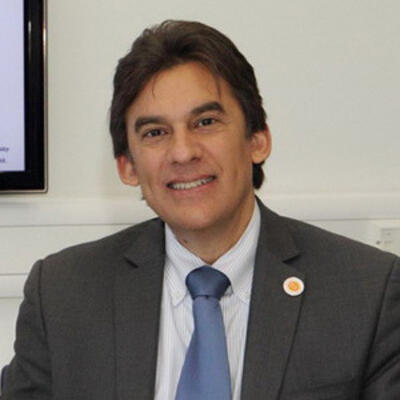
Jose Reyes
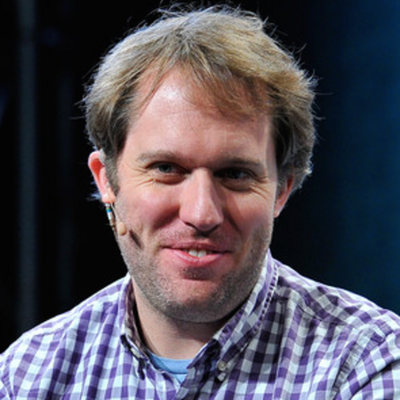
Jake DeWitte
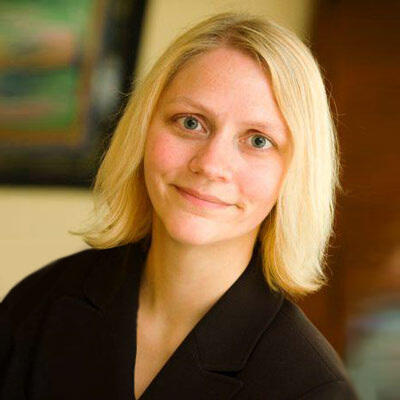
Christine Parthemore
Summary
Nuclear power - revive it or allow a slow death?
In middle of the last century, nuclear power promised an exciting new world of efficient and eternal energy. But after a series of major accidents – most notably those at Three Mile Island, Chernobyl and Fukushima -- public opposition grew into a vigorous “no nukes” movement.
Ken Farabaugh worked as a nuclear engineer at a number of plants. During the the eighties, he was working at the Shoreham plant in Long Island – the hotbed of the anti-nuclear movement.
“It just became so emotional that rational thought went out the door,” Farabaugh remembers. “There were protest picket lines and what have you. There were people that worked at the plant that had their houses set on fire.”
A handful of the plants that once dotted the landscape have been shuttered because they can’t compete with cheaper sources of power. By the end of the century, the industry was languishing. But the urgency of climate change causes some to advocate giving nuclear a new lease on life. And a number of companies, such as Oklo and Nuscale power, are coming up with technical innovations, such as smaller, scalable designs and non-water-cooled reactors, that could offer nuclear a new path forward.
Per Petersen, professor of nuclear engineering at UC Berkeley, believes that the advantages of using nuclear power instead of burning fossil fuels outweigh the perceived dangers.
“Fixing the problem of nuclear waste is something that future generations can grapple with, and it's technically feasible for them,” Petersen asserts. “The billions and billions of tons of carbon that we’re releasing into the atmosphere now, there’s no practical way for future generations to ever rectify that problem.
And I think that shutting down nuclear plants instead of coal plants is just morally indefensible, when you look at what the consequences are and how hard it's going to be in the future to deal with what it is that we’re doing today.”
Full Transcript
Greg Dalton: This is Climate One. I’m Greg Dalton.
Greg Dalton: In the nineteen-fifties, nuclear power promised an exciting new world of efficient and eternal energy. But after a series of reactor disasters, public opposition grew into a vigorous “no nukes” movement.
Ken Farabaugh: There were protest picket lines and what have you. There were people that worked at the plant that had their houses set on fire.
Greg Dalton:By the end of the century, the industry was languishing. But the urgency of climate change causes some to advocate giving nuclear a new lease on life.
Per Peterson: We've not seen great changes in our technology since the first water cooled reactors were launched in submarines back in 1954. And the opportunities to do things better do exist.
Greg Dalton: What’s the future of nuclear power? Up next on Climate One.
---
Greg Dalton: Should America include new nuclear power in its battle against climate change?
Climate One conversations feature oil companies and environmentalists, Republicans and Democrats, the exciting and the scary aspects of the climate challenge. I’m Greg Dalton.
On today’s program: nuclear power - revive it or allow a slow death? Today, about a hundred nuclear plants provide 20 percent of America’s electricity.
Once touted as a modern power source, nuclear fell out of favor after a series of major accidents – most notably Three Mile Island, Chernobyl and Fukushima. A handful of the plants that once dotted the landscape have been shuttered because they can’t compete with cheaper sources of power.
Per Peterson: The billions and billions of tons of carbon that we’re releasing into the atmosphere now, there’s no practical way for future generations to ever rectify that problem. And I think that shutting down nuclear plants instead of coal plants is just morally indefensible.
Greg Dalton: Per [PAIR] Peterson is Professor of Nuclear Engineering at the University of California Berkeley, and co-founder of a nuclear technology company. Later on, we’ll hear from other companies working on innovations that could put new nuclear power back on the table. But as Edwin Lyman of the Union of Concerned Scientists cautions, it’s important that we make it as secure as possible.
Edwin Lyman: Because if the world experienced another Fukushima-like accident, it could seriously damage or further damage the credibility of the technology going forward.
Greg Dalton: Per Peterson and Edwin Lyman join me now to talk about the health of the nuclear power industry today, and its path forward.
PROGRAM PART 1 - PER PETERSON + EDWIN LYMAN
Per Peterson: We've not seen great changes in our technology since the first water cooled reactors were launched in submarines back in 1954 and the opportunities to do things better do exist. Many of those opportunities do involve working with smaller reactors and also looking towards reactors that move away from water as a coolant.
Greg Dalton: Costs of nuclear power have been going up where costs of many other forms of power, solar, wind, renewables have been going down. So how do you address the cost question because the nuclear industry for a long time has said, well, next time is gonna be better but they failed to deliver on price and performance.
Per Peterson: Well, that's a very good point. And again the puzzle is why is it that we see these very high costs relative to other technologies. And it's not because of the resource consumption or the materials. Instead, there's a variety of different ways in which current nuclear facilities are inefficient, particularly in terms of how effectively the use labor. A lot o this comes from dealing with the older technologies active safety systems the amount of maintenance that are required and changing the technology is something that opens up significant opportunities for us to do things in different ways that achieve safety goals and also are more efficient.
I would say that the new approaches have tremendous potential. And so what we need to do is look at the kids and if you look at what's been happening for example, in nuclear engineering education over those last two decades, we've had fantastic students coming in they’re young and enthusiastic. And what they're interested in doing is working with the technology that has tremendous potential to address the climate problem. What nuclear does is it gives us the capability to produce heat without burning fossil fuel. And it's the combustion of fossil fuel that's really the problem. In 2014, nuclear energy was 10.5% of world electricity generation, which proves that it's a technology that can be scaled. The question is how to improve it so it’s also cost competitive and meets all of the other societal requirements that we have for safety, security safeguards and reliability.
Greg Dalton: Edwin Lyman your take on that. Is it the question of getting new technology, a new generation of workforce into the nuclear industry or is it something that's kind of dying a slow death?
Edwin Lyman: Well, rather than give a health analogy I would say the industry to my mind is let’s say public figure that's lost some credibility due to scandal would say the Fukushima nuclear accident in Japan 2011 and is trying to reinvent him or herself and that's what's really going on. Now the industry realizes that the public is skeptical about its claims that it can actually scale up cheaply and quickly enough to make a significant dent in the carbon problem which admittedly is a very serious problem. But their approach to that is to show them the public they are doing something different and that's what I think is largely behind this effort to promote new technologies.
But in my view, I think our assessment is that to develop and commercialize any new nuclear technology is an expensive and a time-consuming proposition. And it's unlikely even if there were new technology that was clearly safer and more secure, more proliferation resistant generated less waste and the current like water reactor technology even such a technology existed, it would still be an extremely expensive proposition to commercialize and it's just not clear that the benefits of that would be justified. So I think probably the quickest way to expand nuclear technology is to address the shortcomings and like water reactor technology and look for evolutionary improvements.
Greg Dalton: One thing that’s happened recently is the Trump administration has rolled back protections under the Nuclear Regulatory Commission easing up on industry. Edwin Lyman, is the public being protected adequately under the current Nuclear Regulatory Commission?
Edwin Lyman: I'm very concerned about the direction of the Nuclear Regulatory Commission and its oversight both of the operating nuclear fleet and also of licensing new reactors. There’s tremendous pressure in Congress from industry funded interest groups and the like to accelerate the licensing of advanced reactors by weakening safety and security standards based on the assertion that all these reactors are necessarily or at this starting gate. So clearly safe and secure they don't need to meet the same standards. And in our view that certainly hasn't been proven for any of these advanced reactor designs they’re still on paper. There are many uncertainties that as nuclear technologies develop that you only discover through experiment analysis. And so until you’ve really close those gaps you can't make that kind of a claim. So we believe that the NRC needs to proceed very cautiously when it's licensing new and novel nuclear technologies and make sure that they are comfortable with understanding all the technical aspects of these new aspects of these designs.
Greg Dalton: There’s also concern, Per Peterson, about the Nuclear Regulatory Commission's oversight of existing operating plants. They've called for less notice to the public and state governors when problems arise. Is the NRC doing its job is as it should right now?
Per Peterson: The NRC, I think that there's an important set of considerations when we think about safety. What we want to do is to incentivize a high safety culture within the industry. An interesting point is that through the 1990s, the reliability of nuclear plants in the United States increased greatly. If you look at the average capacity factor of the fleet in the early 90s it was down about 65% and by the end of the decade it was up above 90%. The major thing that happened that change that was putting in place effective programs to get people and plants to report problems so that they could get fixed and systematically addressing those problems in ways that made sure that the important ones didn’t reoccur. And that increase in reliability emerged out of that sort of approach. The key thing about doing that is you need to focus on those things which are important to safety. If you're looking at the wrong things then you're not focusing in the right places, and so when the NRC says that it's better to focus in one area than others. Generally, there's actually a very rigorous basis behind that kind of recommendation because what you want to do in the end, is to focus on those things which are safety significant. Now the thing that we've not been able to do is to integrate the learning that we've been getting from these operating plants into improving the designs of future plants.
And so this is where the next big set of opportunities are in particular what we want to do is we want to move away from relying on safety systems that require external sources of power so that we can both shut down reactors and provide long-term cooling through a diverse set of pads that include mechanisms that do not require external sources of power because that was the fundamental problem in the Fukushima accident. The licensing process to qualify those systems is highly rigorous in terms of the testing the model verification. And now that we’re starting to use digital twin technology we’re actually using those models running them in parallel with the systems comparing the differences. That allows you to detect changes at much lower levels of degradation and therefore to achieve higher levels of reliability. These are all things that we can do as we start to deploy new reactor technologies. And again, I would say that when you look at how the NRC evaluates license applications and the level of things that you have to do to prove that these systems are safe and reliable and then to monitor them and assure that they’re operating reliably when the plant is running is quite rigorous.
Greg Dalton: Edwin Lyman, the NRC, Nuclear Regulatory Commission has also reclassifying nuclear waste to lower costs and achieve faster cleanup. Jay Inslee, governor of Washington, which has a huge site there, the Hanford nuclear site there a big cleanup concern of the nuclear waste creeping toward the Columbia River, said it’s illegal and cuts out the states. What’s your view, Edwin Lyman, on reclassifying nuclear waste?
Edwin Lyman: So actually that’s not a Nuclear Regulatory Commission decision. The Department of Energy the way it classifies high-level nuclear waste it's a legal definition stemming back to the original 1982 Nuclear Waste Policy Act and it's based more on where how the waste was produced rather than what it's actually composed of. And so to some extent I agree with the idea that there should be a more technically rooted foundation for classifying disposing nuclear waste that is more closely tied to its actual characteristics, rather than where it came from. But in the case of what the Department of Energy is proposing to do, the reclassification of high-level nuclear waste could have unintended consequences. For instance, by allowing waste that was previously considered high-level that under the law would have to be removed, repackaged and disposed of in a deep geologic repository and instead of doing that, that change could potentially allow Department of Energy to leave it where it is in shallow facilities that were never designed for long-term containment of that waste. And so those unintended consequences could be dangerous. So there has to be extreme caution again in trying to monkey around with these definitions, and legal requirements.
Greg Dalton: There’s also questions, Edwin Lyman, about incentives to decommission plants quickly and whether companies can capture some of the savings from decommissioning. We have an aging nuclear fleet in this country about 100 nuclear reactors. Most of them their license have been extended for another what decade or two. But at some point these things will wear out. What about the incentives for decommissioning?
Edwin Lyman: This is a growing problem in the United States as reactors age and or shutdown have to be decommissioned. Decommissioning is not an income stream for any company, except there are no companies that are trying to turn decommissioning into a profitable business. And that's the challenge. These are companies that are buying up shutdown plants and their business model is a little hard to understand but it's part of it is based on the idea that they can actually decommission those plants more quickly and cheaply and therefore obtain some profit from decommissioning funds that are left over. And that obviously invites the potential for a sloppy decommissioning work both risking increased worker exposure to radiation and also less secure containment of the waste. So we think it's appropriate for instance the state of New York right now is raising questions about the acquisition of the Indian Point nuclear power plant near New York City after it shut down by one of these companies. And I think those questions are legitimate and they need to be answered.
Greg Dalton: Edwin Lyman, a lot of scientists esteemed scientist Jim Hansen and others have said climate is so serious that we need nuclear that it is carbon free energy. So as a scientific-based organization that’s very concerned about climate what’s your position on nuclear's contribution to fossil emission free energy?
Edwin Lyman: We don't take position one way or another and it's clear nuclear power as a low carbon electricity source can certainly play a role. But we don't believe that there's any inevitable pathway for energy technology and there are a lot of different factors that go into the evolution of the electricity system as you go toward a deep decarbonization. Nuclear power has unique risks compared to other low carbon technologies like wind or solar and those have to be fully addressed. It's in everyone's best interest to make sure that nuclear power is as safe and secure as possible. Because if the world experienced another Fukushima-like accident, it could seriously damage or further damage the credibility the technology going forward. Japan was one of the largest nuclear power countries in the world it was a big part of its energy future going forward. And after Fukushima nearly every plant shut down for years and that caused a significant impact on the economy, as well as on carbon emissions. So one has to be mindful of the need to ensure that there are no more Fukushimas.
Greg Dalton: Per Peterson, another outcome of the Fukushima disaster was Germany announced to phase out all its nuclear plants by 2022 that cause Germany to suddenly use a bunch of dirty coal so it went the wrong direction on climate temporarily. Now there's calls to slow it down. What are the lessons of Germany's abrupt move away from nuclear after Fukushima?
Per Peterson: Well, I think that you make an important point. And there's a study that recently came out from UC Berkeley that concludes that the nuclear plants that were shut down were replaced dominantly by coal and by imports of external electricity. And again this comes back to the difficulties associated with managing intermittency from sources like wind and solar where we don't have effective storage technology that can scale at this point to manage those problems. I think this goes back also to concerns about nuclear waste. To put that into context, in 2014 as I’ve mentioned, nuclear was 10.5% of global electricity generation. The total amount of spent fuel that was generated worldwide that year would fit on Cal Memorial football stadiums field to a layer 1.3 meters deep. The equivalent amount of coal that we would've had to burn to make that same electricity that same 10% would've been 1 billion tons and that pile of coal would've been 230 km high. Now the thing that we’re doing that's crazy is that we’re actually taking carbon that is in safe long-term deep geologic isolation and we’re digging it up in enormous quantities and burning it to make heat. Yet, we’re worried about generating tiny, tiny volumes of spent fuel and placing it back in the deep geologic isolation.
We somehow think that that is hard when what we’re doing with fossil fuel right now is absolutely crazy. And so we know that deep geologic isolation is scientifically and technically feasible. What we don't have currently is the societal consensus except in Sweden and Finland to deploy and put the wastes into the correct places which is down into deep geologic formations where it will be safely isolated from long periods of time. But that's not a reason for us not to use nuclear energy right now because fixing the problem of nuclear waste is something that future generations can grapple with and it's technically feasible for them. The billions and billions of tons of carbon that we’re releasing into the atmosphere now there’s no practical way for future generations to ever rectify that problem. And I think that shutting down nuclear plants instead of coal plants is just morally indefensible. When you look at what the consequences are and how hard it's going to be in the future to deal with what it is that we’re doing today.
---
Greg Dalton: You’re listening to a Climate One conversation about the pros and cons of nuclear power. That was Per Peterson, Professor of Nuclear Engineering at UC Berkeley, and Edwin Lyman of the Union of Concerned Scientists. Coming up - life after half-life. What happens to workers when the lights go out at their power plant?
Ken Farabaugh: The nuclear field seemed to be going down the wrong direction. The plants were starting to get old…it was just another indication to me that options need to be created.
Greg Dalton: That’s up next, when Climate One continues.
---
Greg Dalton: This is Climate One. I’m Greg Dalton, and we’re talking about the future of nuclear power.
Earlier, we discussed the decommissioning of some aging nuclear power stations. But many plants, such as Vermont Yankee in Vernon, Vermont, are the main economic engine for their area. What’s next for a community when a plant is shuttered and the jobs go away?
Ken Farabaugh [FAHR-ah-bah] spent over four decades in the nuclear power industry. He started off as an engineer in the nineteen-seventies, just as many plants around the country were in the startup phase. He worked his way up the management chain as he moved from plant to plant - Brunswick to Shoreham, Washington State to Connecticut and finally Vernon, Vermont, before quitting to start his own furniture business.
Along the way, several of the plants where Farabaugh worked were shut down for various reasons - cost overruns, aging equipment, and increasing public and political opposition. He first felt the heat while working at the Shoreham Nuclear Plant on Long Island – which in the nineteen-eighties was the hotbed of the anti-nuclear movement.
PROGRAM PART 2 - KEN FARABAUGH
Ken Farabaugh: It was the first time that I had experienced real resistance in terms of nuclear. There were protest picket lines and what have you. And that was all very eye-opening to me because anytime you talked to someone it just became so emotional that rational thought went out the door.
There were people that worked at the plant that had their houses set on fire by people pulling trash cans up and lighting combustible materials and pulling them up against the houses. So it wasn't something that you went around saying I work at Shoreham because of the resistance there.
That woke me up. So from there on all along the way I was creating options for myself. The nuclear field seem to be going down the wrong direction. The plants were starting to get old. And so when I moved here to Vermont Yankee, one of the things that I had done along the way was I had gotten involved with woodworking. So I wound up building a lot of furniture.
Greg Dalton: Can you tell me about the moment that you heard that Millstone was going to close and you would be out of a job at a nuclear power plant for the second time in your career because it was closing down?
Ken Farabaugh: Yeah. Those things are never like a really abrupt thing. You kind of hear a little bit of talk here and a little bit of talk there. And Millstone wasn't exactly, you know, the residents in that area weren't although they were not as anti-as they were up at Shoreham. It was just another indication to me that options need to be created even though I had a good job. And then I was working as a contractor there and they just came back from a meeting one day and said, we have decided we’re going to shut down the unit and mothball it and not start it back up. And so that was number two plant.
Greg Dalton: But you had planned for your future by developing skills that were then going to help you going forward. So you went from Millstone to Vermont. Sounds like you planned for it pretty well.
Ken Farabaugh: Yeah. Vermont Yankee was probably right up there with Shoreham as far as the political environment and the public environment relative to the plant. Nobody wanted it, you know the governor of the state wanted it shut down and the politics just was not good. So I anticipated that at some point I was going to be out of a job again. And so we started in 2005 to create Vermont Woods Studios.
Greg Dalton: How is that when you first said okay, you walked out of Vermont Yankee. I believe it was after Vermont Yankee was closed you actually left?
Ken Farabaugh: No. I was one of the last ones out the door.
Greg Dalton: One of the last ones out of the door at Vermont Yankee Nuclear. And then you walk into a furniture business that's just you after working at huge corporations for all your career.
Ken Farabaugh: Well back in 2005, as we began to prepare for the inevitable from what I thought. We did a lot of research in the furniture industry in woodworking. And what we found was a plethora of woodworking talent in the state of Vermont and everyone had the same problem. They loved doing what they were doing. They either didn't know how or didn't have time or other as far as marketing and selling. So they were all starving artists. And so we kinda put together a website and said, you know, we designed a few pieces and said, let's see if we can sell these. And so in 2005, I was still working at the VY up until 2016. So I did these two jobs in parallel for a long time.
And I worked endlessly, weekends, nights. And this finally looked like it was gonna be viable. So in 2012 we actually rebuilt this building that we’re currently in called Stonehurst.
Greg Dalton: When you walk around the town of Vernon now, how is the economy now compared to when the Yankee plant was operating?
Ken Farabaugh: The economy is pretty much nonexistent here in Vernon at this point. I mean there is a few businesses but there used to be a wonderful little grocery store that doubled as a breakfast shop and a sandwich shop that shut down. There was a local bar that, you know, a lot of business from the plant after work, you know, went over there and had a drink and socialized, that shut down.
Greg Dalton: What about your other colleagues that maybe didn't plan like you did or start a second job while they were working at Vermont Yankee Nuclear Power Plant?
Ken Farabaugh: Many of them had to move. Uproot their families and move. And, you know, it’s not just Vermont that was impacted. This plant is located right on the Connecticut River the border of New Hampshire and Vermont and it’s right in the lower part of Vermont. So it's literally a couple miles from the Massachusetts border. So the workers were pretty much evenly distributed between all three states.
Greg Dalton: And some of the people that you worked with so they basically moved, did they try to find other nuclear jobs. Did they start their own business like you did? What happens to people after a nuclear power plant shuts down, what’s their second act?
Ken Farabaugh: Most people because of the degree of training and qualification required in the nuclear industry they tend to stay with nuclear and they move. Because, you know, it is a pretty specialized field, you’re highly trained for long years of training and the money is good. So it’s very difficult to make that up doing construction or whatever else that people do. I know one guy started a home inspection business but it's just him by himself and he seems to be doing okay. But, you know, many people had to get up and go.
Greg Dalton: I believe Entergy, the energy company, Entergy owns the plant. How much did the operator of the plant help people transition into new careers new jobs?
Ken Farabaugh: They were really good. Entergy, you know, they own 10 plants at the time they shut this one down. So they're scattered around FitzPatrick up in New York. Grand Gulf down in Mississippi and Waterford. So they had openings at all these plants for anyone that wanted to go. You might not get the exact job that you want, but it is a job nevertheless, in the nuclear industry. And there were quite a few that retired as well.
Greg Dalton: How about the people who are say a generation, you were part of kind of the early generation getting into the nuclear industry as it was blossoming in the 70s. How about people who are maybe 10 or 20 years behind you as they look out at plant closings, transitions, and really a shrinking industry in the United States?
Ken Farabaugh: Yeah. The general feeling out there is that it will have to make a comeback at some point in time because these are large baseload plants. I mean you're talking about a thousand megawatt, 1,200 megawatt plants, sometimes three on a site. That's just a lot of generation to replace. And in order for the grid to be stable you need that baseload power. You can’t get it from a solar field generally, it’s just not enough.
---
Greg Dalton: That was Ken Farabaugh, a former employee with the Vermont Yankee Nuclear Power Plant, which was shut down in 2014. This is Climate One. Coming up, the future of nuclear - redesigning the reactor to fit the landscape.
Jacob DeWitte: Something that fits kind of in a mountain chalet type environment what some say it looks like. And that was where we drew inspiration for the A-frame.
Greg Dalton: That’s up next, when Climate One continues.
---
Greg Dalton: This is Climate One. I’m Greg Dalton. We’re talking about nuclear power – the good, the bad -- and what’s ahead.
Two of the companies that are striving to redefine nuclear energy for the twenty-first century are Nuscale Power and Oklo. Nuscale is developing a small modular reactor, designed to generate sixty megawatts of electricity in a small package that can be scaled up as needed. Oklo has designed what they call a “fission battery.” It can use spent uranium fuel, converting nuclear waste to carbon-free energy, and doesn’t need water for cooling. Their Aurora energy plant, to be built at the Idaho National laboratory, resembles a mountain chalet.
Nuscale co-founder Jose Reyes and Oklo CEO Jacob Dewitte join me now. Dewitte starts by explaining why Oklo wanted to make their reactor not only functional, but beautiful.
PROGRAM PART 3 - JACOB DEWITTE + JOSE REYES
Jacob DeWitte: So it’s an important point for us from the beginning was we wanted to help change the paradigm about what people think about when they think about really their energy at the end of the day. I think one thing that we've seen occur over time is, you know, industrial architecture and things that are really tied to provide the I would say essentials for life can be made to look I think fairly aesthetically pleasing really beautiful, those are things we set up to do. And yeah, we drew a lot of inspirations from where we’re initially planning to build these which is up and generally northern areas to start with places that are fairly off grid if you will. Where you think of cold you think of maybe, you know, heavy snowfall considerations. Something that fits kind of in a mountain chalet type environment what some say it looks like. And that was where we drew inspiration for the A-frame. Obviously functionality was really important for us. There’s lot of functionality that goes into that structure.
But generally speaking, you know, what we’re looking at is build these reactors to help solve some significant energy issues for folks facing right now and we’re looking at getting the first power out of these in the early 2020s. Generally speaking I think if we can go as quickly as we hope we can 2023 is a pretty reasonable target. So somewhere around there is when we think the first one will go and we look at deploying units after that sort of in succession to start generating more and more power to help the folks that need it right now.
Greg Dalton: And you’re looking to recycle uranium. So you’re addressing kind of the nuclear waste issue. So tell us how you're going to address both the nuclear waste as well as the new source of power.
Jacob DeWitte: Yeah, well that’s one of I think the most exciting things about what you can do with nuclear is at the end of the day every time you split uranium nucleus, you're generating about 50 million times more energy than when you combust the molecule of a hydrocarbon molecule. So regardless of the reactor type or the technology you're producing millions upon millions of times more energy than what we’re used to. And for context, millions of times larger is something that humans have a hard time I think start putting on understanding 50 million times is literally the difference from the average person's fastest speed that they can run and the speed of light. So it gives you an idea of this is a truly transformative paradigm in terms of energy generation and the impact it has on resources. And as result, there’s very little waste that you do produce and the really exciting thing which is with these advanced reactors you can actually reuse a lot of that waste material as fuel.
Greg Dalton: Jose Reyes, you received Department of Energy support in 2018, you expect regulatory approval by end of 2020. Where is your NuScale, small modular reactor now?
Jose Reyes: Well, it’s pretty exciting. Right now we've made great progress; we’re in the final phases of the design the certification process. So by September of this year the NRC is on track to issue our final safety evaluation report which is a huge milestone for the company.
Greg Dalton: So tell us how big is it where is it gonna be deployed. Who are the customers for this? Because we heard from Jacob that he’s thinking about small northern areas. Where is the market, is this off grid, where you think you gonna fit it into the power marketplace?
Jose Reyes: Yeah, well right now we work with about 29 utilities we meet with the utilities every six months. And so most of the utilities have similar needs. Many have coal power plants that they’d like to retire. And so as a result, as they retire these plants they like to replace them with something that’s carbon free. So this works very well with those plants anywhere from, you know, up to 570 to 700 MW electric. So this works well with our 12-module plant. Each of our modules produces about 60 MW electric --. So we know that there’s a good niche for us in replacement of coal fire plants repurposing those sites. So we can use the existing transmission lines we could use the existing water at those sites and replace those with anywhere from 6 to 12 module NuScale plant. So there’s a lot of interest in that. We’re also working with utilities that have quite a bit of renewable energy, so wind and solar. So we’ve designed our plant to work well in terms of load following those different types of available power generation. So we see a very large market for this.
Greg Dalton: What do you mean by load following? I mean we hear about the idea that wind blows at night, sun shines in the day and there needs to be something to kind of match those two or firm up the grid. So how does nuclear fit into that in terms of, and what is load following?
Jose Reyes: Yeah, in the past the large nuclear plants they do some load following. They can reduce power somewhere from 100% down to 80%. And of course they do that in France and that helps balance the grid. We designed it to be much more flexible so it’s a relatively small nuclear core that allows us to increase and decrease power relatively quickly. Some of the sites that we’ve done, we’re focused on California, looking at the famous duck curve and how you would meet that rapid demand that happens somewhere between 4:00 and 6:00 pm. So we designed our plant to be able to respond to that type of change very rapidly to balance the grid. So it’s a big part of what we’re doing with our design.
Greg Dalton: Jacob DeWitte, ultimately, let’s talk about cost. We’ve seen from the large nuclear power plants that they’ve, you know, cost overruns have doubled to tens, $20 billion companies like Toshiba have gone bankrupt. So why should people believe that this kind of nuclear technology will come in on cost to be competitive?
Jacob DeWitte: Yeah, I think that’s a great question and I think that's the driver for all of us in this game. At the end of the day I go back to what I said earlier we have such an incredible advantage if you will in terms of the energy density of the fuel we use. So if you look at the actual raw materials needed over the lifecycle of a power plant of any type of technology to make a single megawatt hour let’s just say. Nuclear is dwarfed by everything else. So the cost should actually reflect that. And I would contend there's quite a bit of artificial costs that have piled up over time, largely kind of self-imposed by the industry to some extent from regulatory forces and functions. But at the end of the day if you go to I think the fundamental technology design these systems that are take advantage really frankly of the physics on their side and drive simplification that way. You can really strip a lot of those I would say sort of cost over heads or artificial cost I should say, out and come up with a lot more economically oriented designs. We’re starting very small because we see a niche market there that we’re addressing but that's just kind of where we start. And this is just the first product that we intend to introduce there and we can scale from there as we get the experience of actually designing, developing, building operating these plants. Then we can start to scale that forward and to technologies that hit the economic need points that we see for being competitive.
Generally speaking, I feel pretty confident that a wide variety of advanced reactor types and technologies can actually hit the economic performance indicators to be competitive with everything out there. Again, when you have the kind of energy density advantages that we have on a pure technological basis. It's pretty I would say, you know, it’s motivating as well as enabling to be able to hit the cost targets that we’re trying hit. So I think at the end of the day, you can easily see nuclear systems getting into delivering power at less than $.75 KW depending on the market even less than that depending on where they are. And capital costs that can be well under $3,000 still a lot at the end of the day.
And lot of that drives through I think design simplification and things that come from that, including modular fabrication obviously NuScale been doing a lot of work on that too, that I think at the end of the day you see opening up a different paradigm economically.
Greg Dalton: Jose Reyes, you have a closer relationship with the Department of Energy. Tell us about the role of government funding and what you're trying to do to bring a small nuclear reactor to market.
Jose Reyes: Yeah, so the Department of Energy have been a great partner with NuScale from the very beginning, actually. Over the years if you look at where we are today, about two-thirds of our budget has come from private investors. And about one-third from Department of Energy. And we’re at about $900 million invested in what we're doing. In terms of scale we’re looking at the first plant being a 720 MW electric reactor. So it’s a different scale and it’s very complimentary I think with what’s being done by Oklo.
Greg Dalton: How big is that? Tell me, you know, I’ve been doing in the energy business for a decade, I can’t, I don’t know what a megawatt is. So what is 720 MW, what will that, how many casinos will that power?
Jose Reyes: Well, each one of our module is 60 MW and that’s about 50,000 homes that it could power. So you get a sense of, you know, 12 times that so it’s about 600,000 homes and that can be powered with one plant.
Greg Dalton: Great. And then, Jacob DeWitte, your reactor is a micro reactor and a non-water reactor. We’re gonna talk other places in this podcast about how water scarcity water supply is a real concern for nuclear power plants. Either rising sea levels or rising water or just the availability of water. So tell us about how important it is to be not be so dependent on water for cooling.
Jacob DeWitte: Yeah, well for us, especially being very small it's very important so we can open up the siting flexibility, which is kind of a key enabler for what we're trying to do for some of these markets that are off grid and remote. In general, you know, what we’re doing is it's the reactor that's basically you kind of simply describe it as it's metal put together in the right configurations that makes heat; that’s basically the simplest version of what it is. We use metallic fuel cased in steel and then we put those together in the right configuration and then we use liquid metals basically to transfer the heat from the fuel to a heat exchanger where we then heat up basically gas and then spin a turbine to make electricity. That then gives us the opportunity that yeah we don't need water in the core itself but also because we’re able to operate it like high temperatures and because we’re smaller. We can also just reject the unused heat that comes off the system that we can’t convert into electricity into just to the air basically.
So you're just able to just like an air conditioning system just have effectively air-cooled radiators that reject the heat off of it. And that’s an important thing for where we’re looking at deploying early on, especially because a lot of these markets they’re pretty isolated in some cases or they may not have access to water reserves or water may be a pretty precious commodity where they’re at. That said, you know, in some cases water is readily abundant readily available. And in those cases, you know, if there is a reason to tie into the water systems you can but we don’t have to. The biggest reason might be just for process heating. In Alaska for example, one great way to reduce carbon emissions and also reduce the cost of living for folks in some of these areas is also reduce their heating bills. So if you can make low-temperature steam that's a great thing for them to have to be able to circulate, right. But at the end of the day having an ability to decouple from having to site with those resources is I think an important characteristic and important enabler for very small reactor systems. And also an enabler generally speaking for bringing the power to the folks that right now don’t have it and bringing energy access to folks that may be more limited because of siting limitations that they have.
---
Greg Dalton: That was Jacob Dewitt, CEO of Oklo, Inc., and Jose Reyes, co-founder and Chief Technology Officer for Nuscale Power.
Some countries look to nuclear as a promising way to cut carbon emissions and advance technologically. But weak states with nuclear capabilities are grappling with instability brought on by climate change, mass migration and the sudden onset of Covid-19. Could new nuclear technology also bring new risks?
Christine Parthemore is CEO of the Council on Strategic Risks in Washington, DC. She explains how nuclear power is related to national security.
PROGRAM PART 4 - CHRISTINE PARTHEMORE
Christine Parthemore: In a wide number of ways. For one, we've used nuclear power in the history of the United States, civil nuclear energy programs as a way to conduct outreach and shape international norms and standards regarding safety and security and nonproliferation. So from early on for the United States our national security program around the nuclear industry when it was first emerging centered on the United States providing nuclear power technologies and materials and knowledge to states that wanted it for peaceful purposes. So U.S. leadership broadly in international security affairs, but in the nuclear issues specifically was very tied to the provision of nuclear energy services from our country to others for a long time. In more recent years that's changed a lot.
So one of the issues that we look at out in the security side is that one of the main countries providing at least contracts to develop new nuclear power plants with other countries looking to build out that capacity is Russia. Our current U.S. national security strategy states very clearly that we’re concerned about the role of Russia going forward, its influence in key regions around the world and what that means for U.S. security interests. China is newer to the nuclear suppliers market, but they're looking to make that a big part of their export economy as well. So it’s certainly in the U.S. national security interests to make sure that countries that have civil nuclear programs for energy purposes or for research or they use radiological materials for medicinal purposes that those activities are safe, the materials are secured and accounted for and that we’re involved with how international norms and standards evolve and stay strong to make sure that countries that are involved in nuclear technologies for peaceful purposes keep them peaceful and don't merge those programs into hedging toward nuclear weapons programs.
Greg Dalton: So nuclear power has been part of global geopolitics in U.S. foreign policy for a long time. Looking at the Paris climate accord 10 countries explicitly listed nuclear power and their plans to meet their climate. Ten countries listed nuclear in their plans to meet their Paris commitment some were existing nuclear powers, China, India, Iran, Japan others, Argentina and then there’s another group of companies, Jordan, Saudi Arabia, Turkey. So when you look at more nuclear in a climate destabilized future, how do those two things come together? Nuclear can be part of the solution, but there also can be risks.
Christine Parthemore: Certainly. One other risk that I already add in is that for countries that are talking about expanding their use of nuclear energy for climate change mitigation purposes and to develop low carbon economies that doesn't mean that some of their neighbors might not trust that those activities are fully peaceful. So it’s another concern that we have is some countries if you look at the Saudi Arabia, Iran dynamics for example. Some countries may be worried that those Paris commitments to more nuclear energy are more of what they call climate washing their nuclear programs. So that’s another concern.
But we have looked into for the past few years the concern that climate change and its effects when coupled with other socioeconomic and political trends will cause countries that possess either nuclear weapons or nuclear energy or both to become destabilized in all or parts of their countries. That's a trend that we’re already seeing as climate and other pressures mount in different countries around the world. If you add into the mix the need to control nuclear materials and keep a nuclear system safe and secure. Make sure that no one is accessing nuclear materials that shouldn’t have access to them for example. Making sure that the facilities and plants are safe and that they’re well secured. Things like that they take a really strong governance system. It’s an issue set that we need to be very aware of which requires one of the ways that we've been addressing this is bringing together people from this different discipline. So nuclear experts with climate experts, and making sure they're talking to each other.
Greg Dalton: Most nuclear power plants around the world are water cooled. Therefore they're located on rivers, lakes and oceans. We know that water supply, water volatility, droughts and floods, there’s a lot of water risk. So talk about water risk in a climate world and how that can affect the stability of nuclear power plants?
Christine Parthemore: Sure. So at the extreme case we have evidence of this with the unfortunate tragedy of the triple disasters that Japan experienced including the tsunami that struck the Fukushima Daiichi Nuclear Power Plant there. That country has been struggling for more than nine years now to handle that. There was a large inundation of water coupled with many other different factors sort of going exactly wrong. But it's a good case where the Japanese were very prepared for earthquakes and tsunamis. And they had an actually pretty aggressive standard for protecting their power plants and coastal areas from these disasters. But this disaster the tsunami was just so much worse than even their most aggressive planning standards.
And I think that shows the mindset that we have to adapt in a world of climate change. And you see what happened with the reactors there, there are still meltdowns occurring. They’re still years later trying to adequately assess the status of the melted down fuel and where the fuel resides and then there is water challenges that continue today. So as they have to continually pump water through the affected nuclear reactors in order to prevent further chain reactions from occurring and keep them cooler. They have a huge problem with what to do with all that water.
So they’re in a horrible position of having to decide whether to flush some of this water that's passed through the affected reactors back into the ocean or whether they have to keep storing it on land and trying to treat it over time. So again we know that climate change is upon us we know how it's going to go. There are great assessments of flooding and sea level rise out there. There's no reason that we shouldn’t all take responsibility, especially in critical industries like the nuclear sector where things can go very wrong, if they do go wrong, and taking those extra layers of precaution.
Greg Dalton: We’ve talked earlier in this radio show and podcast about new technologies that don't use water. So they’re separated from that water risk. And that water risk is not just Japan nine years ago. There's been examples in New Jersey and Nebraska in this country where the rising Missouri River as well as super storm Sandy impacted nuclear power plants. Is the industry ready for these kinds of climate risks around the world?
Christine Parthemore: So I would say no. Not in general no, some countries have a lot of assistance on this. And again where the challenges is if we're addressing reducing these risks from the status of what we know to be the risks today versus what we know the climate risks are that are coming down the pike during the lifetimes of these plants. We need to be aggressively planning now for those changing environmental conditions as well as security conditions they’re gonna merger on this.
The threat landscape is not static, just like the climate landscape that we’re dealing with is not static either. So we need to become more sophisticated about not just again planning for the threats that we know. Our presence and are normally accounted for in the regulatory system in the licensing systems that exist in countries like ours and others but we should be helping other countries like this to use the forecasting tools that we have available. To say this is what our climate future and this is what our security future sort of looks like and let's plan to that standard.
---
Greg Dalton: You’ve been listening to Climate One, and a discussion about the role of nuclear power in a hot and destabilized world. That was Christine Parthemore, CEO of the Council on Strategic Risks.
In the first part of the program we spoke with Per Peterson, professor of nuclear engineering at University of California Berkeley and Edwin Lyman of the Nuclear Safety Project at the Union of Concerned Scientists. My other guests were Ken Farabaugh, formerly with the Vermont Yankee nuclear power plant, Jacob Dewitt, CEO of Oklo, Inc., and Jose Reyes, co-founder and Chief Technology Officer for Nuscale Power.
Greg Dalton: To hear more Climate One conversations, subscribe to our podcast climateone.org. Please help us get people talking more about climate by giving us a rating or review wherever you get your pods.
Greg Dalton: Kelli Pennington directs our audience engagement. Tyler Reed is our producer. Sara-Katherine Coxon is the strategy and content manager. Steve Fox is director of advancement. Anny Celsi edited the program. Our audio team is Mark Kirchner, Arnav Gupta, and Andrew Stelzer. Dr. Gloria Duffy is CEO of The Commonwealth Club of California, where our program originates. [pause] I’m Greg Dalton.
